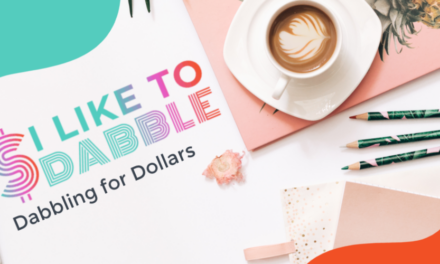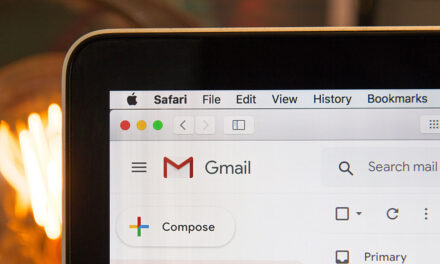“Post it, host it, and they will come” is no longer a surefire strategy for digital publishers seeking to expand their reach among consumers and boost revenue through subscriptions and online ads. Indeed, when it comes to content consumption, conventional websites are increasingly taking a back seat to mobile apps and social networks that can usually deliver a faster, better experience. It’s little surprise, then, that a growing array of third-party mobile content distribution platforms and resources have emerged that can help prepare and deliver static or customized content on behalf of publishers who are looking for alternatives to self-hosting and maintaining a traditional CMS. These options (which include Facebook’s Instant Articles, Medium for Publishers, Apple’s News app, Snapchat’s Discover, and Google’s AMP) offer plenty of perks that content companies can’t easily ignore, say the experts.
Many big players have already embraced third-party platforms, including National Geographic, The New York Times, BuzzFeed, Cosmopolitan, and VICE. The reason is simple: Mobile and social are where the eyeballs are. “Publishers, marketers, and advertisers of all stripes, in most cases, were completely caught off guard by the rapid adoption of smartphones-and, to a lesser degree, tablets-by consumers. The app economy, likewise, developed much faster than incumbent content companies expected. So AMP, Facebook, Apple, and the like are providing the tools and audience access that publishers have struggled to develop themselves,” says Mike McGuire, mobile marketing lead and VP of research for Gartner for Marketing Leaders.
Kashyap Kompella, research director at Real Story Group, says the stakes are high, and technology giants such as Google, Facebook, and Apple are battling to reign supreme in the mobile advertisement space and be the newspaper delivery agents of choice for your mobile phone. “Publishers, already hit by declining readership, have been struggling to master mobile user engagement strategies. These mobile distribution tools can be very handy for them, particularly since a big chunk of their reader traffic comes from the likes of Google and Facebook anyway,” says Kompella. “The problem these tools are solving is not just user experience, but, more importantly, content discovery-publishers have no choice but to have a presence where their readers are spending most of their time.”
Paul Berry, founder and CEO of RebelMouse, says social now owns the homepage completely, which has changed the game for content providers. “The shift to mobile amplifies all the issues and problems of the open web-slow loads, bad ads, and bad user experience. People want to stay in their social networks now and want to read articles and watch videos without ever leaving,” Berry says. “While this causes many new issues and concerns for publishers, it also opens up a new world of opportunities for a different type of approach to media.”
Mitchell Reichgut, CEO and co-founder of Jun Group, sees benefits to the content distribution platforms for all parties involved. “Users get instant access to content in a format that loads quicker, publishers gain access to new and potentially large audiences, and platforms provide a seamless user experience,” says Reichgut.
There’s also the potential for higher-performing ads. “AMP-enabled pages can get ranked higher in mobile search results, Facebook’s Instant Articles get highlighted more in the Facebook newsfeed, and so on. The promise of these platforms is more traffic and, by extension, increased ad revenues-which is ultimately what publishers are hoping for,” Kompella says.
Davids may even be able to benefit more in this mobile distribution space than Goliaths. “Smaller publishers may benefit the most by having their content hosted, because it’s a chance to level the playing field and get outsized exposure,” says Reichgut. For a popular blogger who can maintain and grow an audience, “these tools can be extremely valuable,” says McGuire. Desktop content could stand to profit indirectly from these mobile platforms too. “Desktop traffic can grow quickly through a halo effect of stories going viral on the key platforms’ mobile products, which will also translate into desktop traffic,” Berry says.
However, hitching your wagon to a platform doesn’t come without risks. Publishers are putting their fates and content discoverability in the hands of a third party. Another obvious downside is that the platforms set the ground rules. “If you’re a publisher, you have to play by those rules. These aren’t partnerships between equals, but to be fair, the tech companies have been willing so far to consider publisher requirements and modify their platforms in response to publisher feedback,” Kompella says.
Additionally, monetization rates via these platforms can be iffy. “The monetization is going to be significantly different than subscription margins newspaper and magazine publishers enjoyed in the pre-internet age,” says McGuire.
Before choosing a mobile content distribution platform/resource, do your homework on what each offers. Berry highlights the pros and cons of each:
Facebook’s Instant Articles
- Pro: Significant audience growth potential; plays to the change in Facebook’s algorithms and changes in human behavior
- Con: Might not monetize as well as a loaded media article page
Medium for Publishers
- Pro: Another emerging network with its own audience of influencers
- Con: Replacing your site with Medium’s can have significant limitations in the short and long run. How well will Medium hold up as it gains larger scale and becomes a direct competitor with the other social networks?
Apple’s News App
- Pro: Apple is putting marketing muscle in getting the News app in front of a huge audience.
- Con: It’s complicated to integrate correctly, and the audience is still very small.
Snapchat’s Discover
- Pro: Its young, influential, quickly growing audience tends to spread love quickly.
- Con: Much smaller audience and numbers than Facebook, limited flexibility, and requires finding a Snapchat “voice” for your brand
Google’s AMP
- Pro: Much faster load for mobile pages because of caching and explicitly set limitations
- Con: Can lead to a drop in monetization as opposed to a loaded media article page
Overall, while these platforms are relatively simple to use, they require dedicated resources for initial implementation and overall monitoring, which is why “large publishers are experimenting with multiple platforms,” says Kompella. “And it may make sense for smaller publishers to pick one or two platforms rather than bite off more than they can chew.”






